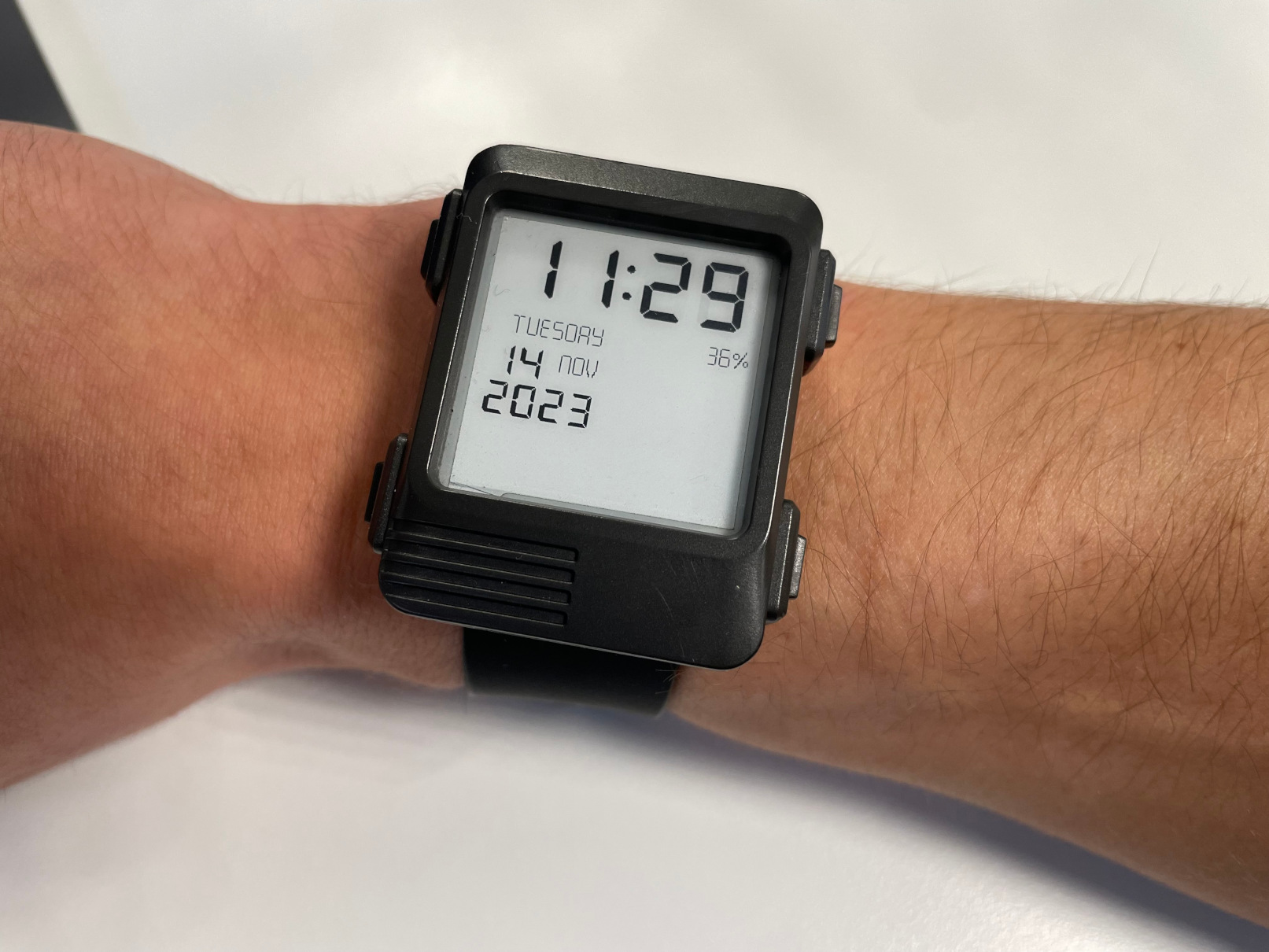An ‘almost 1 month-battery-life-e-ink-display-watch’ that you can build/program.

what & why
This summer I came across this project: https://sqfmi.com/watchy/. It’s a watch with an e-ink display, and a esp32 based platform that you can build upon. And you even have to build it yourself once it arrives in the mail ! And it’s “open source hardware and software” !
So i ordered one, and played with it when it arrived. The websites claims you can even do OTA update to the watch faces from your phone ! Disclaimer, I never managed to make this feature work. But it’s a very cool project nonetheless.
I only need the timekeeping feature of the watch, so the additional capabilites like step counter and weather were a bit useless for my taste, so I decided to dive in the repo. The documentation is very limited, quite sparse, and the only real up-tu-date documentation source is their discord. So I cherry picked what I needed from the OG repo, fork’d it, and made my own !
With the default code and setup, I could manage at most 6 days before the watch died. The goal was then to increase this as much as possible.
how
The code is completly rearchitected, and the face isn’t decoupled from the logic anymore (as a single watch face was enough).
I then stripped every code that wasn’t useful, disabled everything unecessary (eg the step counter). I also removed as much dependencies as possible, and switched the NTP based time sync feature with an API call to the worldtimeapi:
if (settings.timezone == "ip"){
weatherQueryURL = "http://worldtimeapi.org/api/ip";
}
else{
weatherQueryURL= "http://worldtimeapi.org/api/timezone/" + settings.timezone;
}
http.begin(weatherQueryURL.c_str());
int httpResponseCode = http.GET();
if (httpResponseCode == 200) {
String payload = http.getString();
JSONVar responseObject = JSON.parse(payload);
int epoch = int(responseObject["unixtime"]);
int dst_offset = int(responseObject["dst_offset"]);
int tz_offset = int(responseObject["raw_offset"]);
int local_epoch = epoch + dst_offset + tz_offset;
tmElements_t tm;
breakTime((time_t)local_epoch, tm);
RTC.set(tm);
...
This is even better than the NTP based one because you can specify ip as your timezone, and the API will guess your local zone and respond with the proper local time.
Finally I added a sleep mode that will put the watch in deepsleep between user-defined hours (eg 23:00 to 07:00). And it will even vibrate (like an Apple Watch) if you’ve configured a wake up time:
// vibrate if this is alarm time
if (currentTime.Hour == settings.alarmHour && currentTime.Minute == settings.alarmMinute) {
vibMotor(75, 4);
}
// set sleep mode
if (currentTime.Hour == settings.bedTimeHour && currentTime.Minute == settings.bedTimeMinute) {
showSleep();
}
All of these tweaks together bring the battery life to around 25 days, with a time sync every week. Tinkering a bit with some variables could land a whole month, eg by increasing the sleep period, or syncing the time only once when the watch is plugged in.